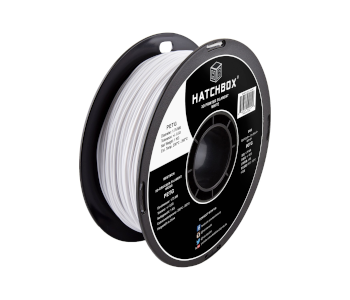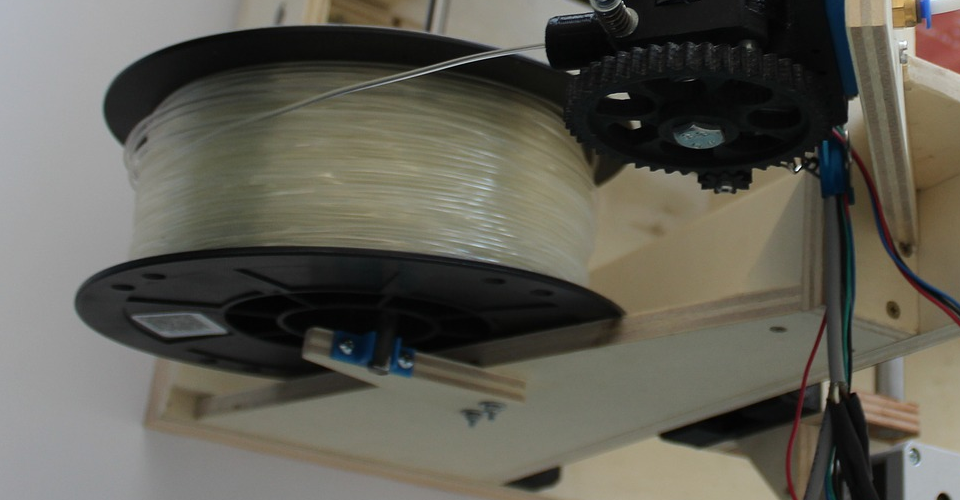Melting Point of ABS – Everything You Need to Know
ABS has a melting point between 220 to 230 °C. This gives ABS very good thermal resistance, but it also means that ABS is more prone to warping during 3D printing. With a glass transition temperature above 100 °C, ABS is one of the most commonly used 3D printing filaments for high-temperature applications. However, printing at a high temperature also introduces complications to using ABS as filament.
The melting of thermoplastics is one of the central mechanisms of 3D printing. By melting the plastic, it becomes malleable enough to be shaped into whatever model we feed into the slicer. What happens at the molecular level when a thermoplastic like ABS melts? What is it about ABS that makes it a difficult material to work with?
The mechanism of melting of ABS

ABS has become incredibly popular in the world of 3D printing because of its superior thermal resistance, chemical stability, and mechanical properties. It’s also a very cheap plastic on account of being easy to synthesize. ABS is considered one of the most widely used high-performance synthetic plastics in the world.
Despite its many advantages, ABS is still a thermoplastic like ABS or PETG. By definition, this means that ABS can be melted down and allowed to solidify again without losing any of its physical or chemical properties. This is the very essence of using ABS for 3D printing.
When a thermoplastic is exposed to heat, its intermolecular bonds start to stretch until the material becomes more flexible or malleable. However, the material itself remains intact at a molecular level. At this state, a thermoplastic can be manipulated to fit any shape. Aside from 3D printing, this unique trait is also leveraged by processes like injection molding and vacuum casting.
In 3D printing, melting ABS allows it to be extruded as very thin and controlled strands. These are laid on top of each other layers, allowing one molten layer to form “entanglements” of polymer strands with the previous layer. These are not as strong as intermolecular bonds, which is the reason why layer boundaries are considered the weak points of a 3D print.
Aside from the relatively high melting temperature, ABS has fairly similar thermal properties to other thermoplastic materials. However, these thermal properties can also introduce complications for the 3D printing process.
The challenges of 3D printing with ABS
ABS has earned quite a reputation as a difficult filament. Many 3D printing professionals considered it the gateway to high-temperature 3D printing, mostly because it takes a considerable level of skill to build perfect ABS projects.
The common problem encountered when working with ABS is warping. This typically manifests as the first few layers of the print lifting from the print bed. This severely reduces bed adhesion, diminishes the dimensional accuracy of the print, and makes the finished product less appealing visually.
The problem with warping can be mostly associated with its high melting temperature. Since ABS needs to be heated to high temperatures, it is cooled down very rapidly the moment that it exits the hot end nozzle. This rapid cooling results in a quick accumulation of thermal stress in the 3D-printed part.
Thermal stress is accumulated as the ABS contracts during cooling. At some point, this thermal stress builds up to the point that it overcomes the adhesive forces that are holding the print’s base layer in place.
To be fair, ABS is hardly the only filament that exhibits this behavior, neither is it the most difficult material to work with. Filaments that print at very high temperatures, such as PEEK, are a lot more problematic. Polypropylene is also highly prone to warping but because of different reasons such as low surface energy and a highly crystalline structure.
Mitigating the issues of ABS often just involves enhancing bed adhesion and slowing down the rate of cooling. The best way to do this is to use a heated bed, apply an appropriate adhesive to the bed, disable the cooling fan, and place an enclosure around the print chamber. This might seem like a lot of work, but the benefits of print with ABS are usually worth the extra effort.
Comparing ABS with other 3D printing filaments

ABS is one of the two most popular filaments in 3D printing. The other one, PLA, prints at a much lower temperature of about 180 °C but is much easier to work with. Another fairly popular 3D printing filament is PETG, which melts at a temperature comparable to ABS – from 230 to 260 °C.
One of the things that makes ABS an ideal 3D printing material is its high glass transition temperature of 105 °C. This means that an ABS print will not deform even at the standard temperature at which water starts to boil. This is much higher than the glass transition temperature of PLA (65 °C) and PETG (85 °C). If you want to create a 3D printed project that can withstand a temperature of 100 C, then ABS is probably your most accessible option.
There are several alternatives to ABS for high-temperature 3D printing, although these filaments are not so commonly used. Examples include Nylon (260 to 280 °C), Polycarbonate (265 to 300 °C), Amphora (240 to 260 °C), and PEEK (360 to 400 °C). Each one of these filaments has even better thermal stability than ABS, but they are also prone to heavy warping.
A special point of comparison is polypropylene (PP). PP prints between 210 to 230 °C, a range that is almost the same as that of ABS. However, PP is considered one of the most difficult filaments in 3D printing. The semi-crystalline structure of PP makes it less able to redistribute thermal stress as the material cools. Coupled with poor bed adhesion, PP is a material that takes warping to a whole new level.
Final thoughts
ABS is one of the more well-known filaments in 3D printing. It is also quite notorious as a difficult filament, although it is far from being the most difficult. One cannot question the usefulness of ABS -it is one of the most widely used high-performance plastics today.
The high melting temperature of ABS is one of its most distinguishing characteristics. This gives ABS its distinct thermal stability. However, it also introduces warping into the equation. This is not a problem that is unique with ABS – all filaments that print at high temperatures pose this challenge. If you want to make 3D prints that can withstand extreme temperatures, then you are going to have to learn how to deal with warping.


